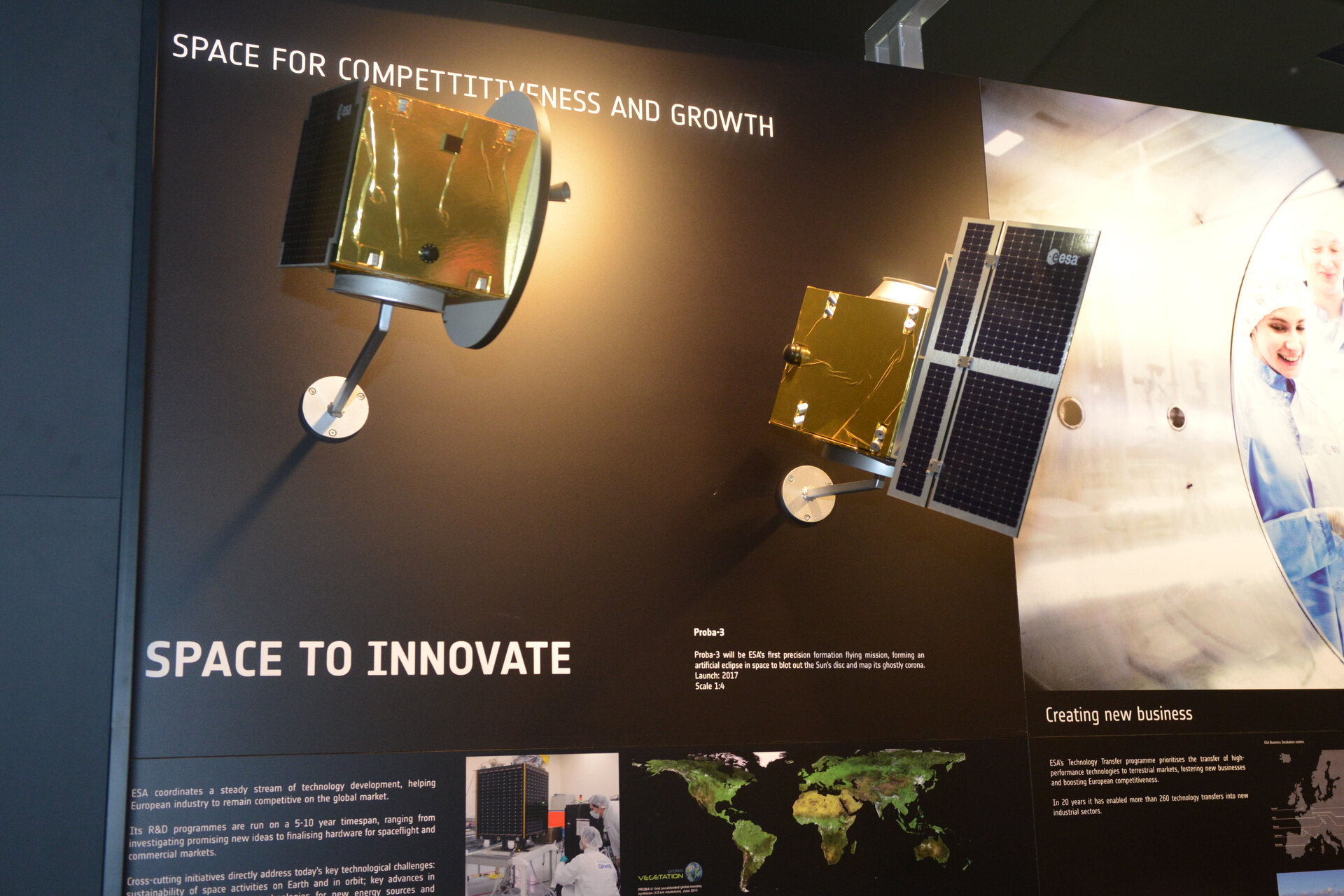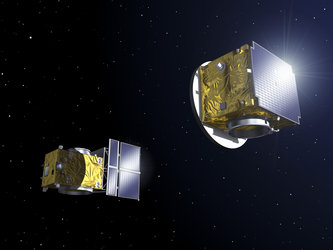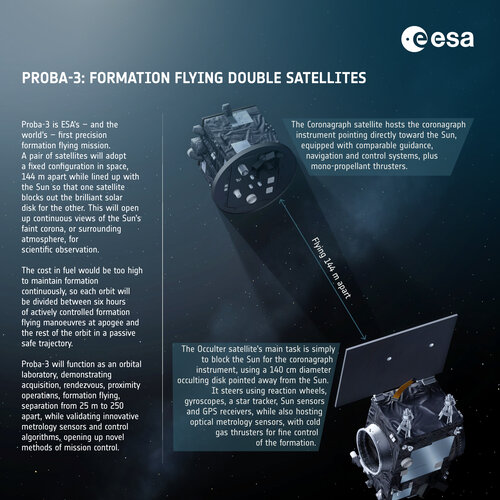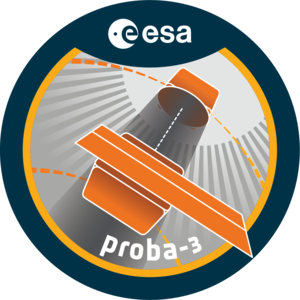Proba-3 Science payloads
Proba-3’s formation flying capability will be further demonstrated by the quality of its scientific results, following the tradition of ESA’s Proba small satellite family. The twin satellites will form a so-called ‘externally occulted’ coronagraph, with the Coronagraph satellite’s optical instrument shielded from glaring sunlight by the Occulter satellite’s occulting disk – forming an artificial eclipse in space.
The Sun is a million times brighter than its surrounding corona, so eclipsing it is essential for coronal studies. This is what happens during a solar eclipse of the Sun by Earth's Moon. But that sporadic event lasts a for only a few minutes. A solar coronagraph is an optical instrument which reproduces artificial dark eclipse conditions by mean of an occulting disk. Previous Sun-observing missions such as SOHO incorporate ‘coronagraphs' to study the corona. But their effectiveness is limited by a phenomenon called diffraction, where stray light overspills the edge of the occulting disk.
Progress on this front requires moving the Occulter much further away while still preserving eclipse-like conditions for long periods of time – precisely the performance offered by the Proba-3 externally occulted coronagraph. The technique has previously been attempted during the 1975 manned Apollo-Soyuz mission, when an Apollo Command Module blocked light falling on a Soyuz spacecraft.
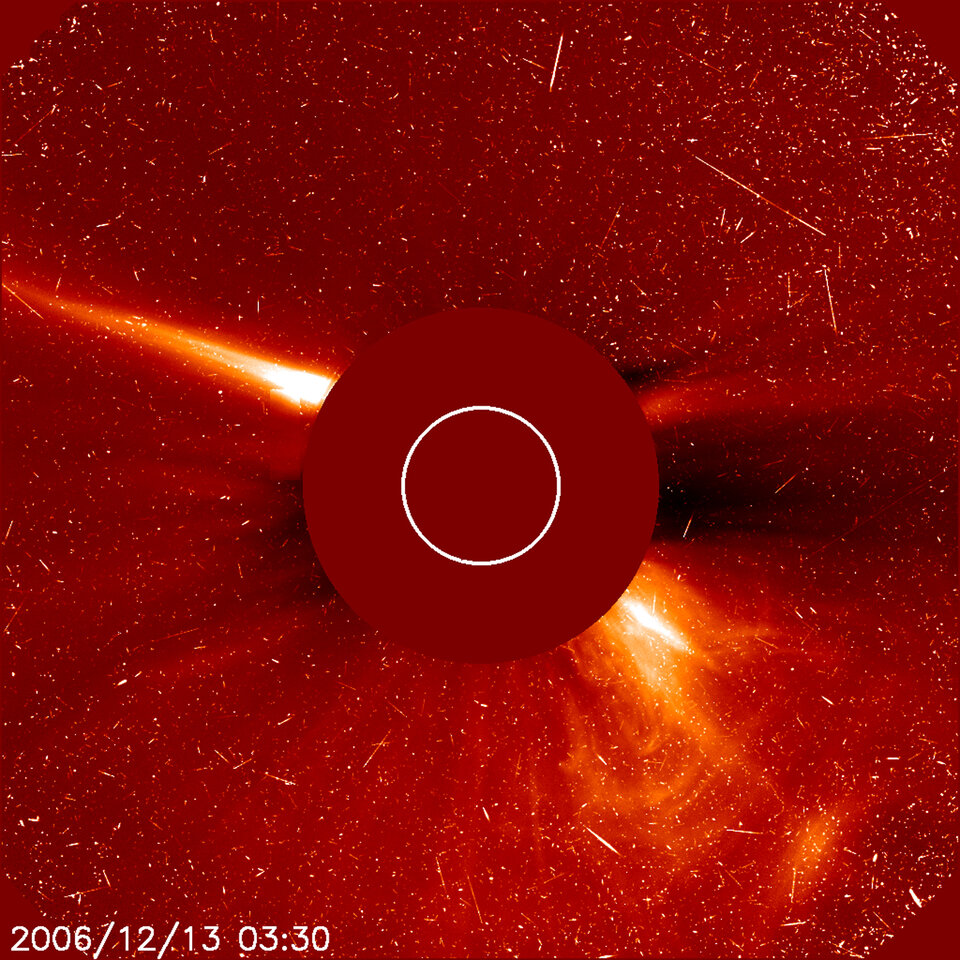
Proba-3's coronagraph is called ASPIICS, which stands for Association of Spacecraft for Polarimetric and Imaging Investigation of the Corona of the Sun. The instrument is made of a large 1.4m diameter occulting disk mounted on the Occulter spacecraft, and a Lyot-style solar coronagraph system carried by the Coronagraph spacecraft. When the two satellites are co-aligned with the Sun, 144 metres apart during formation flying, the occulting disk will produce an artificial eclipse by blocking the blinding body of the Sun.
ASPIIC offers valuable scientific return, targeting an increase in our close-up view of the Sun and its corona from three solar radii down to just 1.08 solar radii as a goal – that is not traditionally enabled by smaller-scale coronagraphs. Although solar physics missions have probed the corona at various temperatures and heights, the region within three solar radii where the solar wind and coronal mass ejections are born remains largely unexplored, and extremely difficult to observe with sufficient spatial resolution and sensitivity to understand these phenomena.
One of the main goals of ASPIICS is to address a long-standing scientific mystery: why is the solar corona significantly hotter than the Sun itself? It will do so by observing the structure, the dynamics and the heating process that occurs very close to the sun’s surface. It will refine our understanding of the interaction between the Sun and its atmosphere.
ASPIICS will also enable the study of Coronal Mass Ejections (CMEs). These huge ejections of hot matter outward the Sun govern the space weather and can have non-negligible impact up to the Earth. For instance, it may produce high radiation due to solar particles, hazardous for the astronauts aboard the International Space Station, or create electrical disturbance for on-orbit satellites or even on-ground.
In addition to ASPIICS, Proba-3 will embark two other science payloads. The Davos Absolute Radiometer (DARA) is an absolute radiometer for measuring the total Solar Irradiance. The high-fidelity 3D Energetic Electron Spectrometer (3DEES) is embarked as a a technology demonstration. It has been developed as a science-class instrument that will measure electron spectra in Earth’s radiation belt.


